If you’re getting into the Pokémon Trading Card Game for the first time and looking to open packs, it’s worth knowing the Pokémon TCG card rarities in case you want to sell or trade them in the future. The TCG has Common, Uncommon, and Rare cards with much more nuance in the Rare varieties.
The Pokémon Company created this game around trading, so having good cards to trade and knowing how to find out if a card is rare is vital to not getting ripped off. Keeping track of different Rare variants has become increasingly difficult over the years, though. And Japanese Pokémon TCG cards use different rarity symbols than English cards do, adding to the confusion.
How many different types of rarities are there? Honestly, there’s a lot. Here are all the card rarities in the Pokémon Trading Card Game.
All rare variants of Pokémon TCG cards
A card’s rarity is represented by a symbol located in the bottom right corner of every card. There should be a shape that indicates what rarity the card is.
Common cards are marked with a black circle, Uncommon cards have a black diamond, and Rare cards always have a black star. It sounds simple but gets complicated when it comes to the 15-plus Rare variants available at the time of writing.
- Common: Marked with a black circle
- Uncommon: Marked with a black diamond
- Rare: Marked with a black star
| Rare | Ultra Rare | Rare Holo EX | Rare Rainbow |
| Rare Holo | Rare BREAK | Rare Prime | Radiant Rare |
| Rare Holo Lv.X | Illustration Rare | Double Rare | Rare Holo GX |
| Rare ACE | Rare Promo | Special Illustration Rare | Full art Rare |
| Rare Gold | Secret Rare |
Holo Rare Pokémon TCG rarity

As the name suggests, these are rare cards that have a holo picture, meaning that the image shines and gleams, especially when the card is rotated in the light. Players may also recognize the name foil, used in other TCG games, which is the same as a holo. Only a small amount of Rare cards in a set get holo variants, making them a collector’s item.
Holo Lv.X Rare Pokémon TCG rarity

First appearing in the Diamond & Pearl expansion were Pokémon Lv.X. These cards are identifiable by the Lv.X following the Pokémon’s name on the TCG card in the top left corner. The Lv.X stands for level-up and is an example of how Rare Pokémon TCG cards are sometimes tied to mechanics within a specific set.
Reverse Holo Pokémon TCG rarity
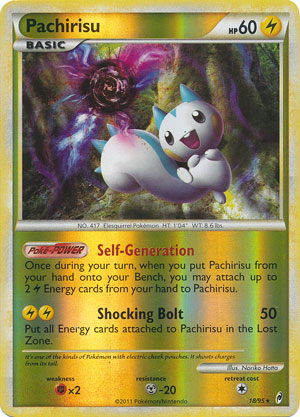
This is a special line of cards that puts a holo gleam on every part of it except the actual picture. Any card in a set can be a reverse holo, which makes some cards, like Welder from Unbroken Bonds, more pricey.
EX/GX/V/ex Half Art / Half Body Pokémon TCG rarity

These are the cards that everyone wants to be pulling from a booster pack. They’re usually some of the biggest creatures in the game and some of the hardest cards to find.
These cards can also be classed as Ultra Rare. In truth, they have a lot of different names and come with a unique mechanic that’s special to the current rotation.
Full Art / Full Body Pokémon TCG rarity

A different variant of EX/GX/ex cards, Full Art or Full Body cards have the image take over the entire card, making the writing hard to read at times.
Secret Rare Pokémon TCG rarity

Each set has a number of cards attached to it. You can see the number usually in the bottom left of the card. Secret Rares, however, go beyond that number. For instance, if you have a card that reads “115/113,” it’s a Secret Rare, Rainbow Rare, or Ultra Rare.
Secret Rare cards can look different, with Rainbow Rare and full art variants also being put into this category. You can always tell a Secret Rare from the number, though, and they’re the most expensive cards.
Rainbow Rare Pokémon TCG rarity

Added in the Sun and Moon Series, Rainbow Rare cards are some of the hardest and most expensive in the game. They only appear at certain times, and some can sell for hundreds or thousands of dollars.
Ultra Rare Pokémon TCG rarity
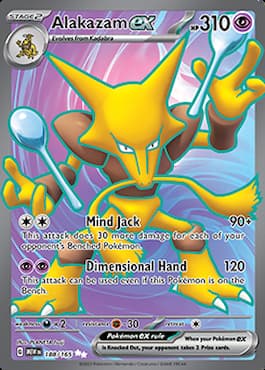
Ultra Rare and Secret Rare Pokémon TCG cards are often lumped together. Most players call them Secret Rare, but according to the Pokémon TCG index, they are listed as Ultra Rare. Ultra Rare cards have a specific game mechanic and/or appearance that distinguishes them from Rare Holo cards.
Here are many types of Ultra Rare cards:
- Pokémon (star)
- Pokémon ex
- Pokémon-EX
- Pokémon LV.X
- Pokémon-GX
- Pokémon V
- Pokémon VMAX
- Pokémon VSTAR
- Pokémon Prime
- Pokémon LEGEND
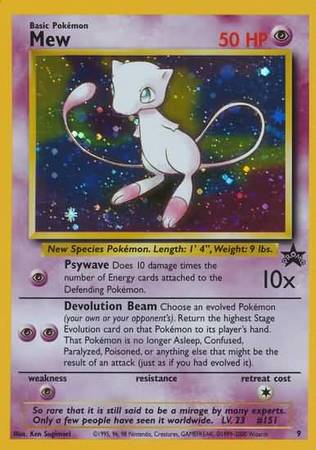
These are specific cards given away at events. You can tell the difference by the black star and the word “promo” written on it.
Gold Hyper Rare Pokémon TCG rarity
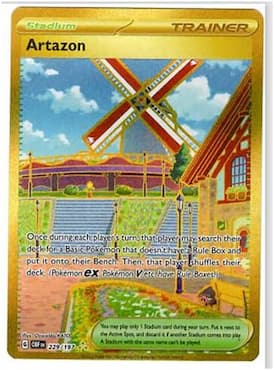
Some Pokémon TCG cards have Gold borders, and others are Gold hyper Rare cards like Artazon from Obsidian Flames. Hyper Rare gold cards are not a common pull and are typically worth money on the secondary market. Much like Secret Rare and Ultra Rare, Hyper Rare cards have a card number higher than the last regular number in the set. The Artazon card from Obsidian Flames combines full art with a Gold border.
Many Rare Pokémon TCG are tied to a specific set or mechanic. With each new set and expansion released by The Pokémon Company, players are bound to encounter new Rare cards.
Tag Team Rare Pokémon TCG rarity

Although this isn’t a specific rarity, Tag Team cards are in a league of their own. They were first released in the Team Up! packs and are a highly sought-after collector’s item.
VMAX Rare Pokémon TCG rarity

Added in the Sword and Shield expansion, VMAX works like Mega Evolutions in that they can be placed on top of Pokémon V cards to give them new moves, abilities, and a lot of health. They can appear in a lot of different forms.
Ace/ACE SPEC Rare Pokémon TCG rarity

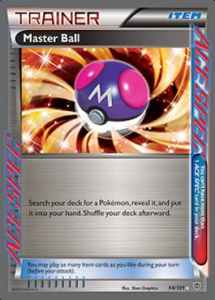
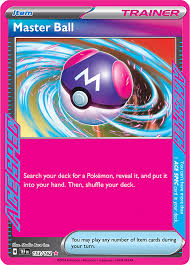
First printed through the Boundaries Crossed expansion, Ace spec cards are slated to return to Pokémon TCG in 2024. You can only use one ACE SPEC card and since 2024 have had a nice shiny purple card with custom lettering and art, it really helps them stand out against other cards in your deck.
Trainer’s Pokémon cards
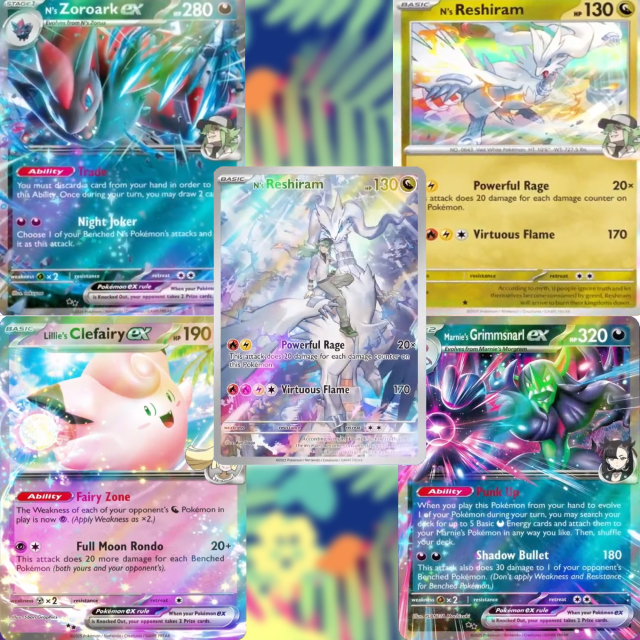
Returning in 2025, Trainer’s Pokémon are a unique card form with varying rarities. These Pokémon are usually named after a certain trainer, group, or character from both games and anime. They are unique in that their effects and moves usually work in tandem with another equally named Trainer Pokémon card.
In original sets, you could get these cards as holos or non-holos, but now, with the upcoming re-release of the format, you can get them as normal, holo, or ex-rarities instead.




